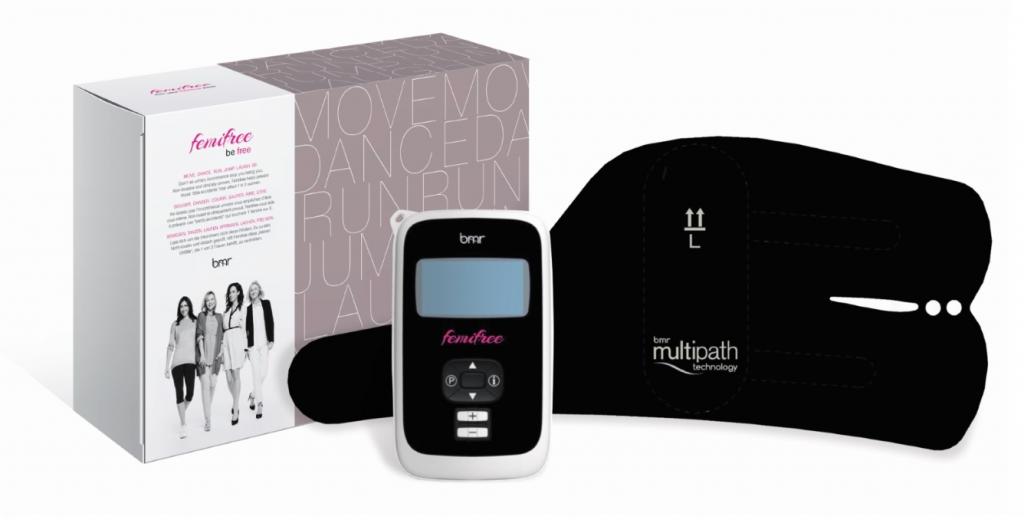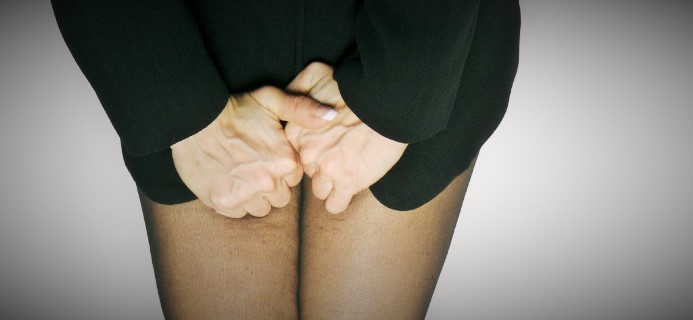It might be a taboo topic but urinary incontinence is strikingly common, affecting one in three British women. A new, non-invasive and clinically-proven device promises to help change that
Stephanie Baldwin never thought urinary incontinence would happen to her. Yet, following the birth of her first child, little things she used to take for granted suddenly became a challenge.
‘I used to regularly do yoga and go jogging but after I had my first baby, every time I tried I would experience leaks,’ says Stephanie. ‘It also happened when I was picking up heavy shopping bags at the supermarket, coughing, sneezing and laughing I felt like I was on my own and was so embarrassed to talk about it.’
Stephanie is far from alone. According to the Bladder and Bowel Foundation, a striking one in three British women are affected by urinary incontinence. Now, new research by Femifree has found that over two thirds of those women have never spoken to their GP about it and an overwhelming 60 per cent say they ‘just put up with it.’
I felt like I was on my own and was so embarrassed to talk about it
Advised by her midwife to do pelvic floor exercises, they didn’t do anything to help, says Stephanie. ‘The only other options offered to me were internal probes, which didn’t appeal, or surgery, which I really didn’t want to go through, particularly while caring for a young child.’
But according to Dr Naomi Potter, GP and women’s health expert, Stephanie wasn’t told the full story as far as treatment options were concerned. ‘The primary advice offered to women suffering from urinary incontinence is to carry out pelvic floor exercises which involve squeezing and contracting these muscles to build strength which helps build bladder control,’ says Dr Potter. ‘But if they’re not performed often enough or incorrectly, they will make little difference.
EMS technology works by giving muscles that control your bladder a mini-workout
Advancements in medical technology now mean there are non-invasive, clinical devices that can be worn externally and use specialised technology to help contract and strengthen the pelvic floor muscles; treating the root of the issue, explains Dr Potter.
One such advancement is the new Femifree, a new medical device launched last month that’s completely non-invasive and proven to strengthen the pelvic floor muscles and restore bladder control with just half an hour’s use a day for 5 days a week. After 4 weeks you will start to notice a real difference, with full results at 12 weeks.

Based on Electronic Muscle Stimulation (EMS) technology – the same technology that the Slendertone abs toner is based on – the Femifree is a garment worn around the buttocks to which are attached electrodes positioned to emit pulses that stimulate focused, pelvic floor muscle contractions.
Femifree comes with a handheld device you can use to control the intensity of the pulses and its EMS technology works by giving muscles that control your bladder a mini-workout, strengthening, tightening and retraining them. It uses a specific type of EMS called Multipath technology which sends pulses in criss-crossing directions to help strengthen the muscles of your entire pelvic floor – this all happens without anything needing to be placed inside your vagina. Here’s a video showing how the Femifree works.
93 per cent of testers showed a 50 per cent reduction in their urine loss after four weeks of using the Femifree
You put on the garment with the pads in the correct position, plug in the controller and then use it to manage the intensity. The device comes with full instructions that talk you through which levels of intensity are best for whatever stage you’re at. Here’s a video showing how the Femifree is worn.
According to clinical trials on 104 women aged 24-85, 93 per cent of testers showed a 50 per cent reduction in their urine loss after four weeks of using the Femifree for 30 minutes daily. After 12 weeks, that went up to an 86 per cent reduction.
‘Femifree is really simple to use,’ says Stephanie. ‘It’s worn outside the body so completely non-invasive and the garment is comfortable to wear and easy to put on. With a low setting there isn’t a great deal of sensation but as you build up the levels you can feel a tingling, though it’s not at all painful.’

the pelvic floor muscles and restore bladder control

Stephanie used Femifree for a few months, wearing it for half an hour a day, 5 days a week. ‘I could feel the machine working straight away, however I noticed a massive difference after about six weeks. Around this time, the amount I was leaking dramatically decreased. A few weeks later, I was able to jump again!’ Indeed, in trials of the product, nine in ten subjects who used the Femifree said they’d recommend the product to others.
‘The great thing about Femifree is that you have it for life,’ says Stephanie. ‘It’s definitely worth the money. If I suffer from any leaks or bladder weakness in the future, I can simply use it and know it will make all the difference. I would definitely give it a 10/10 for both effectiveness and ease of use.’
What exactly is the urinary incontinence? Dr Naomi Potter explains

‘Like any other muscle in the body, if you don’t exercise the pelvic floor, it can lose tone and strength causing symptoms of urinary incontinence.
‘Urinary incontinence can affect women of every age but the most common causes are pregnancy, childbirth, the ageing process and being overweight. Hormonal and physical changes, additional pressure on the bladder and the effects of the childbirth process can mean that the pelvic floor muscles become less effective and therefore less able top control the passing of urine.’
Urinary incontinence can affect women of every age
‘The most common type is Stress Incontinence, when pelvic floor muscles are weakened so pressure on the bladder results in leakage, for example when you cough, laugh, sneeze, stretch, exercise and even when you have sex.
‘Urge incontinence on the other hand is a sudden, uncontrollable urge to visit the toilet, often with little warning; this can happen a number of times a day and even at night. Finally, Mixed Incontinence is a combination of both of these.
The Femifree is priced at £329 and is available at femifree.co.uk
World Continence Week is 22nd – 28th June 2015
Like this article? Sign up to our newsletter to get more articles like this delivered straight to your inbox.





















































